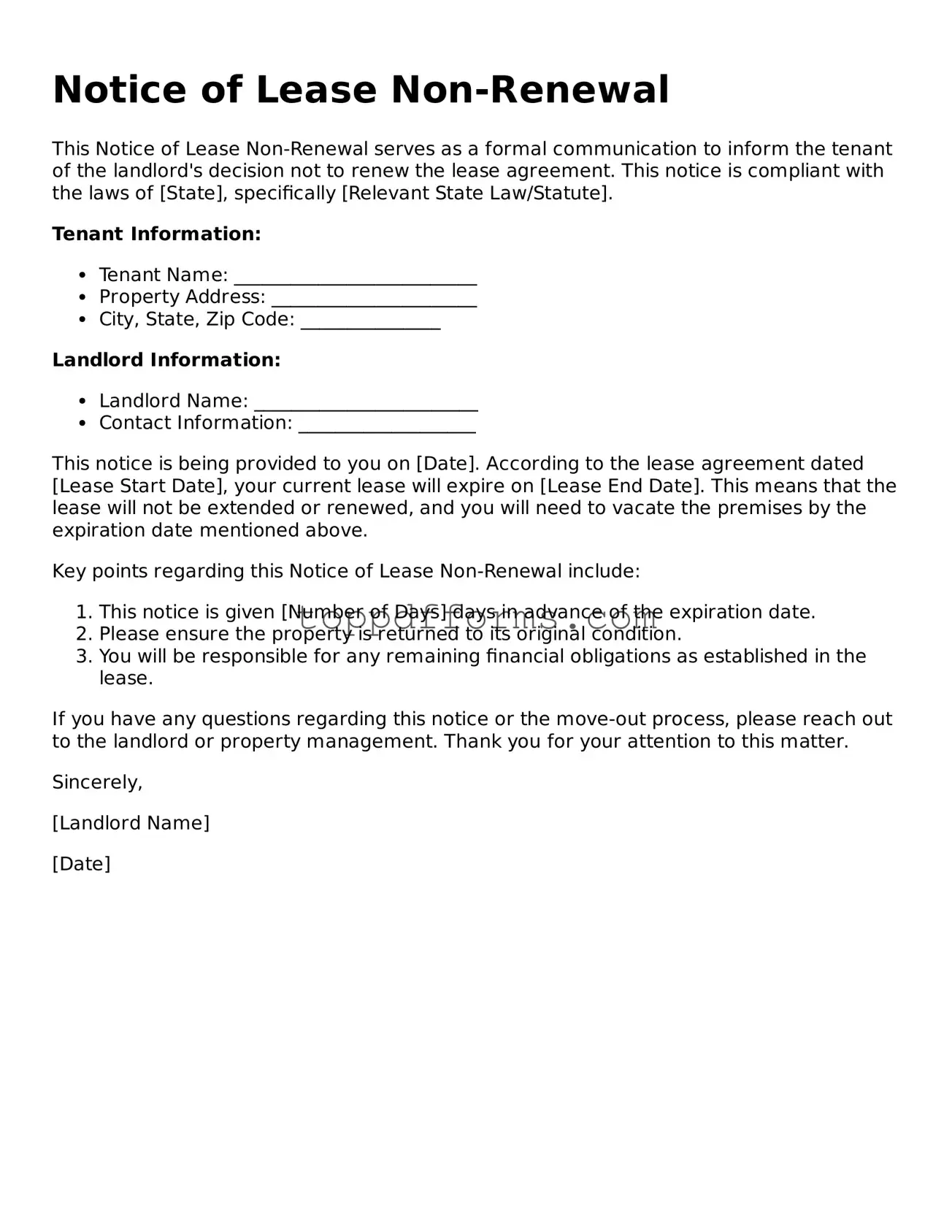Filling out a Notice of Lease Non-Renewal form can seem straightforward, but many people stumble on common mistakes that can lead to confusion or even legal complications. One prevalent error is failing to provide the correct address of the rental property. This detail is crucial, as it ensures that the notice reaches the right location. Omitting or miswriting this information can delay the process and create unnecessary disputes.
Another frequent mistake involves neglecting to specify the date the notice is being served. This date is important because it establishes the timeline for the non-renewal. Without it, both landlords and tenants may find themselves uncertain about the effective date of the notice, potentially leading to misunderstandings about lease terms.
Some individuals also overlook the requirement to sign the form. A signature is not merely a formality; it signifies that the party issuing the notice agrees to the contents of the document. Failure to sign can render the notice invalid, leaving the lease in limbo and causing unnecessary stress for both parties.
Inaccurate or vague language can create additional problems. When filling out the form, it’s essential to be clear and precise about the intent to not renew the lease. Ambiguities can lead to misinterpretations, which might result in disputes down the line. Using straightforward language helps avoid these pitfalls.
Additionally, people often forget to check the lease agreement for any specific requirements regarding the notice period. Many leases stipulate how much advance notice must be given before non-renewal can take effect. Ignoring these stipulations can lead to complications, including the possibility of being bound to the lease longer than intended.
Another common oversight is not providing a copy of the notice to the other party. While it may seem obvious, ensuring that both the landlord and tenant have received the notice is essential for maintaining clear communication. This step helps avoid any claims of non-receipt, which could complicate matters later.
Some individuals also fail to keep a record of the notice. Documenting when and how the notice was delivered can be invaluable if disputes arise. Whether it’s a certified mail receipt or a note about a personal delivery, having proof can protect both parties’ interests.
Moreover, people sometimes misjudge the timing of their notice. Sending it too late can result in automatic lease renewal, while sending it too early may not align with the lease terms. Understanding the proper timing ensures that the notice serves its intended purpose effectively.
Lastly, many overlook the importance of reviewing the entire form before submission. A simple proofreading can catch errors or omissions that could otherwise lead to complications. Taking the time to double-check the details can save a lot of headaches later on.
